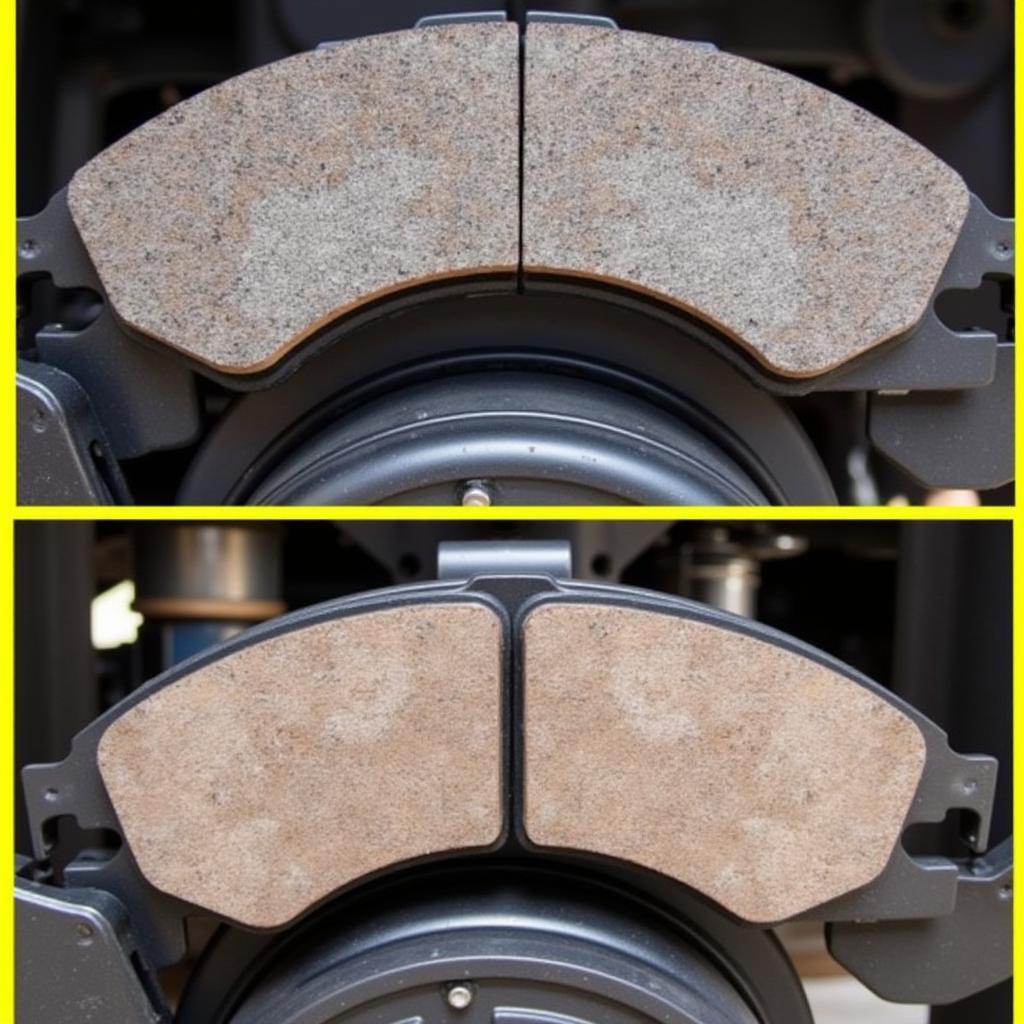If you’re driving a 2017 Honda Accord and see a brake pad warning light, it’s crucial not to ignore it. This warning light usually signifies your brake pads are wearing thin and need replacement. This article will guide you through understanding the warning, potential causes, and the steps to take for a solution.
Understanding the 2017 Honda Accord Brake Pad Warning Light
The brake pad warning light on your 2017 Honda Accord is designed to alert you when the brake pads are wearing down and require attention. The warning light typically appears as a circle with parentheses around it and the word “BRAKE” illuminated on your dashboard.
Ignoring this warning light can lead to more severe brake problems and compromise your safety on the road.
What Causes the Brake Pad Warning Light to Come On?
While worn brake pads are the most common reason for the warning light, other factors can also trigger it:
- Worn Brake Pads: Your 2017 Honda Accord is equipped with a wear sensor embedded in the brake pads. This sensor triggers the warning light when the pad material wears down to a certain level.
- Low Brake Fluid: Brake fluid is essential for transferring force from your foot on the brake pedal to the wheels, enabling your car to stop. If there’s a leak in the brake system and the fluid level drops too low, the warning light may illuminate.
- Faulty Brake Pad Sensor: While less common, the brake pad sensor itself can malfunction, causing a false warning light.
- Electrical Issues: In some cases, an electrical problem within the dashboard or wiring harness can lead to an erroneous brake pad warning light.
What to Do When the Brake Pad Warning Light Comes On
When the brake pad warning light illuminates, taking the following steps is crucial:
- Check Your Brake Pads: The first step is to visually inspect your brake pads if you feel comfortable doing so. Look for significant wear and tear on the pads. If they appear thin or you notice deep grooves, it’s likely time for a replacement.
- Check Your Brake Fluid: Locate the brake fluid reservoir under the hood of your car and check the fluid level. If it’s below the minimum mark, there might be a leak that needs to be addressed.
- Consult a Mechanic: If you’re unsure about the cause of the warning light or uncomfortable performing a visual inspection, it’s best to take your car to a trusted mechanic specializing in Honda vehicles.
Can I Still Drive with the Brake Pad Warning Light On?
While you might be tempted to continue driving with the brake pad warning light on, doing so is strongly discouraged. Driving with worn brake pads significantly reduces your car’s braking efficiency, increasing your stopping distance and the risk of an accident.
If the warning light comes on while driving, it’s best to pull over when it’s safe to do so and call for a tow truck to avoid potential damage to the brake rotors.
Cost of Brake Pad Replacement for a 2017 Honda Accord
The cost of replacing brake pads for a 2017 Honda Accord can vary depending on factors like your location, the mechanic you choose, and the type of brake pads you opt for (genuine Honda parts or aftermarket options).
Generally, you can expect to pay between $150 to $300 for parts and labor.
Tips to Extend the Life of Your Brake Pads
You can take several measures to promote the longevity of your brake pads:
- Avoid Hard Braking: Frequent hard braking generates excessive heat, accelerating brake pad wear. Try to anticipate stops and coast to a stop whenever possible.
- Lighten Your Load: Carrying heavy loads in your car puts additional strain on your brakes.
- Engine Braking: When descending steep hills, downshift to a lower gear to utilize engine braking, which helps reduce the load on your brake pads.
- Regular Maintenance: Adhering to your Honda Accord’s recommended maintenance schedule, including regular brake inspections, can help catch potential issues early.
Conclusion
The brake pad warning light on your 2017 Honda Accord is a crucial safety feature that should never be ignored. Addressing the issue promptly ensures optimal braking performance and keeps you safe on the road.
Regular maintenance and mindful driving habits can go a long way in extending the life of your brake pads and preventing premature wear. If you have any doubts about your Honda Accord’s braking system, seeking professional assistance from a qualified mechanic is always recommended.
FAQs
Q: How often should I replace my 2017 Honda Accord brake pads?
A: There’s no one-size-fits-all answer as brake pad lifespan depends on driving style and conditions. However, it’s generally recommended to have your brake pads inspected every 12,000 miles or 12 months.
Q: Can I replace my Honda Accord brake pads myself?
A: While it’s possible to replace brake pads yourself with the proper tools and knowledge, it’s generally recommended to have this service performed by a qualified mechanic.
Q: What happens if I ignore the brake pad warning light for an extended period?
A: Ignoring the warning light for too long can lead to severe damage to your brake system, including worn rotors, requiring more extensive (and expensive) repairs. It can also significantly compromise your ability to stop safely, increasing the risk of an accident.

